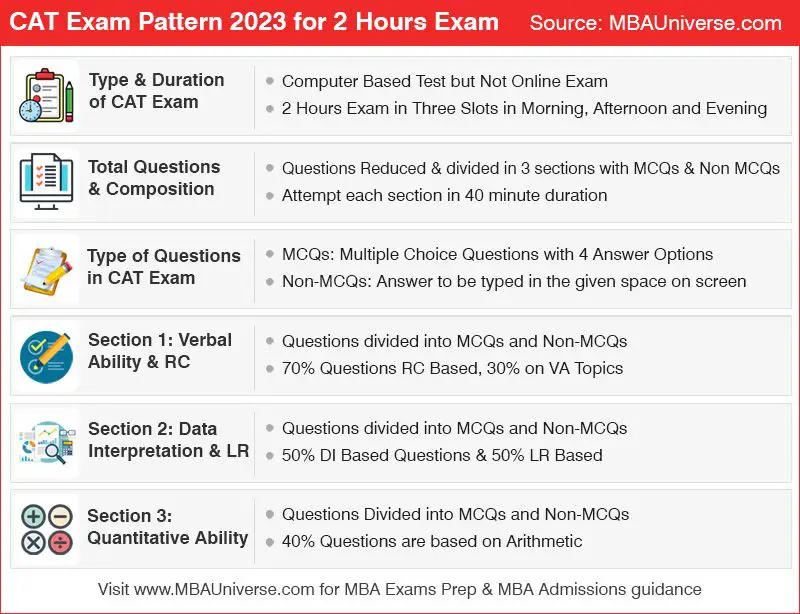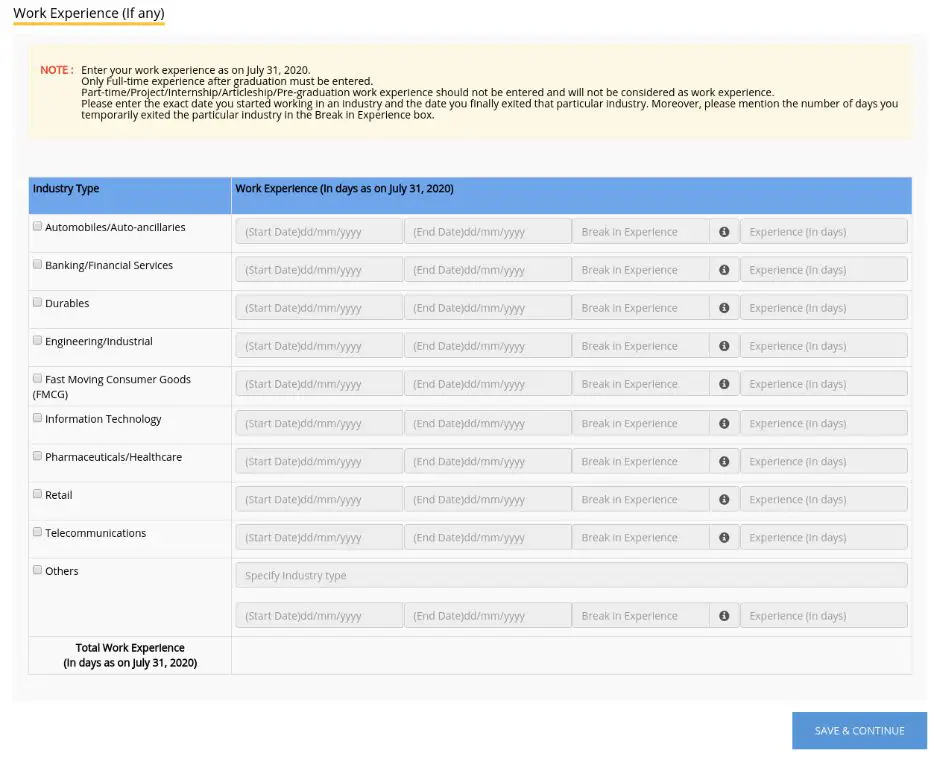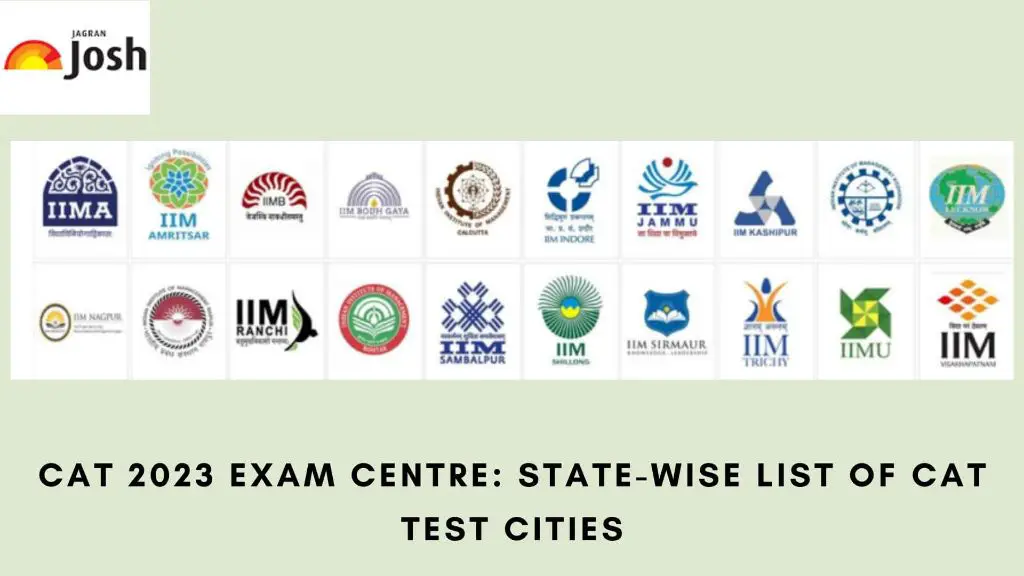Overview of CAT
The Common Admission Test (CAT) is a computer-based test for admission into graduate management programs in India. It is conducted by the Indian Institutes of Management (IIMs) as part of the admission process for their business administration programs, including MBA and PGDM courses.
The CAT was first introduced in 1950 by the government of India to select students for the IIM Calcutta. Over the years, the government decided to hand over the responsibility of conducting the CAT exam to the IIMs. Since 2009, the CAT has been conducted by the IIMs on a rotational basis.
The CAT is considered one of the most competitive exams in India, with over 2.5 lakh candidates appearing for it each year. The scores obtained in CAT are accepted by over 150 business schools across India for admission. Some key highlights about the CAT include:
- Computer-based standardized test
- Held annually, usually in November
- Tests skills in Quantitative Ability, Verbal Ability, Logical Reasoning
- Top tier B-schools in India consider CAT score
- Highly competitive exam with low admission rates
CAT Exam Pattern

The CAT exam consists of three sections – Verbal Ability and Reading Comprehension (VARC), Data Interpretation and Logical Reasoning (DILR) and Quantitative Ability (QA). As per the CAT exam pattern 2023, the three sections have the following format:
– VARC section has 22-24 questions to be solved in 40 minutes. This section tests the candidate’s verbal skills including comprehension, grammar, and vocabulary.
– DILR section has 20-22 questions to be solved in 40 minutes. It evaluates the ability to analyze data and think logically.
– QA section has 22-24 questions to be solved in 40 minutes. It tests quantitative, mathematical and analytical skills.
The total number of questions in CAT 2023 is 100, which have to be solved by candidates in 180 minutes. There is a sectional time limit of 40 minutes for each section. Candidates need to attempt questions within the sectional time limit.
Registration Process
The registration process for CAT 2023 involves meeting the eligibility criteria, filling out the online application form, and paying the application fee by the last date. Candidates must have a bachelor’s degree with at least 50% marks or equivalent from a recognized university to be eligible.

The application form is available on the official CAT website – iimcat.ac.in. Applicants must create a login ID and password before proceeding to fill the form. Details like personal information, academic qualifications, work experience, contact information, test city preference need to be filled accurately.
The application fee for CAT 2023 is Rs. 2000 for general category students and Rs. 1000 for reserved category students. The fee can be paid online via net banking, credit/debit card, UPI or other payment gateways. Applicants must upload a scanned copy of their passport-sized photograph and signature in the specified format and size.
The last date to submit the CAT application form was September 21, 2023. Applications submitted after this date are not accepted. Once the form is submitted, candidates can download their admit card and await further instructions regarding the exam schedule.
Test Centers
The CAT exam is conducted in test centers spread across 150+ cities and towns in India. According to the official CAT website, there are around 400 test centers where the exam is conducted (https://www.iimcat.ac.in/peripherals/about-cat/test-centres). The number of centers varies by state and city depending on the number of registrations received. Major metro cities like Delhi, Mumbai, Kolkata, Chennai, Bengaluru, Hyderabad etc. have the maximum number of test centers.

While registering for CAT, candidates have to select any 4 test cities in order of preference. The system allots one out of the 4 preferred cities subject to availability. If none of the preferred cities have availability, a nearby city is allotted. The CAT authorities try to allocate the test city that is most convenient for the candidate.
The process of allotting test centers happens in a very structured way. First preference is given to the candidate’s city of correspondence address. If no slots are available, nearby cities are checked for availability. The system follows the candidate’s order of preference for allocating a suitable test center city.
Admit Card
The CAT admit card is a mandatory document that candidates must carry with them to the exam center on the test day. The admit card contains important details like the candidate’s name, registration number, roll number, exam date, exam time, test center details, and exam day instructions.
Candidates can download the CAT admit card from the official website, iimcat.ac.in. To download the admit card, candidates have to log in using their user id and password that was created during the CAT registration process. The CAT admit card is usually available for download around 20 days prior to the exam date. It is advisable that candidates download the admit card as soon as it is released and check all the details mentioned on it.
The admit card will contain details like the candidate’s name, date of birth, application number, roll number, exam date and time, exam center details, candidate’s photograph and signature. Candidates must ensure that all the details mentioned on the CAT admit card are correct. In case of any discrepancy, candidates need to contact the exam authorities immediately.
Candidates also need to affix their passport size photograph on the admit card if the photograph on the admit card is unclear. Applicants must carry a valid photo id proof along with the CAT admit card on the exam day, otherwise they will not be allowed to appear for the test.
Exam Day Process
On the day of the CAT exam, candidates need to reach the exam center at least 30 minutes prior to the reporting time mentioned on their admit card. This is to ensure enough time for security checks, ID verification, and receiving instructions.
Candidates must carry a printed copy of their admit card along with a valid photo ID proof to the exam center. The ID proof can be a PAN card, driving license, voter ID, passport etc. Both the admit card and ID need to be shown at the entrance gate for verification.
After verification, candidates undergo a security check where their belongings are scanned through metal detectors. Items like mobile phones, calculators, watches etc are not allowed inside the exam hall and must be deposited outside. Candidates are permitted to carry only certain items like masks, gloves, sanitizer, water bottle, admit card, ID proof inside the hall.
Due to COVID-19, candidates must follow guidelines like wearing masks properly, maintaining social distancing etc. Temperature checks are done at entry points and candidates displaying symptoms are isolated.
Once inside the hall, candidates are allotted a computer system after another round of admit card verification. They are briefed about the exam process, number of sections, time limits etc. Rough sheets are provided for calculations.
The online CAT exam begins strictly at the scheduled time. Candidates must only start when instructed and not waste time understanding the interface.
Exam Analysis
The CAT 2021 exam analysis provides an overview of the question paper pattern and difficulty level of the exam. According to exam experts, this year’s paper was moderately difficult overall with some variations across sections.
Section-wise Analysis
In the Verbal Ability and Reading Comprehension (VARC) section, there were 24 questions in total. The difficulty level was moderate with reading comprehension passages from diverse topics. There were some tricky questions testing vocabulary and paraphrasing skills.
The Data Interpretation and Logical Reasoning (DILR) section had a total of 20 questions. The overall difficulty level was higher compared to previous years, with lengthy and calculation intensive sets. Topics included data analysis, logical reasoning, and decision making.
The Quantitative Aptitude (QA) section had 22 questions. The difficulty level was moderate, with questions covering arithmetic, algebra, geometry and modern math. There were a few tricky questions but most were manageable.
Expected Cutoffs
Based on the paper analysis, experts predict the expected cutoff for CAT 2021 to be around 90 to 95 percentile for IIM calls. The sectional cutoffs are expected to be around 70-80 percentile in QA, 80-90 in DILR and 70-75 in VARC (Cite this: https://www.careerlauncher.com/cat/analysis-cut-off/2021/).
The overall paper was balanced providing ample opportunity to score for well prepared students. With planned preparation and strategy, it was possible to tackle the exam successfully.
Scoring Process

The CAT exam has a complex scoring process that candidates should understand. After attempting the exam, raw scores are calculated based on the number of correct and incorrect responses. Each correct answer is awarded 3 marks while 1 mark is deducted for each incorrect answer. Questions that are not attempted are awarded 0 marks.
Section-wise and overall cut-offs are set by the exam authorities based on the difficulty level and performance of all test takers. Candidates need to score above the sectional cut-offs as well as the overall cut-off to be considered for admission into IIMs and other institutes.
Once raw scores are calculated, the normalization process begins. This process accounts for differences in difficulty levels across test sessions and converts raw scores into percentiles. The normalized percentile score is considered for final selection and not the raw score. A candidate’s percentile indicates performance relative to other test takers. For example, a percentile of 80 means the candidate has performed better than 80% of the exam takers.
The CAT normalization process involves calculating the composite score which is a weighted average of the scaled scores in the three sections – Quantitative Ability, Data Interpretation & Logical Reasoning, and Verbal Ability & Reading Comprehension. The composite score is then converted into a percentile based on the performance of all test takers and forms the final CAT percentile. (CAT Normalization Process 2023: Composite Score Calculation)
Results
The CAT 2022 exam result was announced on December 21, 2023 at 5pm on the official website cat.iim.ac. Candidates can view their scorecard and percentile by logging into the CAT website using their user ID and password.
The CAT scorecard contains section-wise and overall percentile scored by the candidate. Percentiles are calculated based on the performance of all test takers. The highest possible percentile one can score is 100.
Once the results are declared, candidates have the option to view their response sheets and get an in-depth analysis of their performance in the exam. This helps them understand their strong and weak areas. Based on the percentiles scored, candidates will get calls from various IIMs and other top MBA colleges for admission.
Initially, IIMs will shortlist candidates for the next round based on their CAT percentiles and academic profiles. The final admission offer will be given based on their performance in Written Ability Test (WAT), Group Discussion (GD) and Personal Interview (PI) rounds conducted by each IIM.
Key Takeaways
Below are some of the key takeaways to remember when preparing for the CAT exam:
- Start preparing early, at least 3-6 months in advance (source: https://leverageedu.com/blog/how-to-crack-cat/)
- Understand the exam pattern and syllabus thoroughly (source: https://www.indiatoday.in/education-today/tips-and-tricks/story/5-tips-to-crack-cat-2023-in-first-attempt-2402646-2023-07-06)
- Develop effective time management skills through mock tests (source: https://byjus.com/free-cat-prep/strategies-to-crack-cat-in-first-attempt/)
- Work on your strengths and weaknesses by analyzing previous years’ papers
- Make a realistic study plan and follow it diligently
- Don’t neglect your health and take breaks to avoid burnout
With thorough preparation, time management, and focus on your weaknesses, it is possible to crack the CAT exam in your first attempt.

